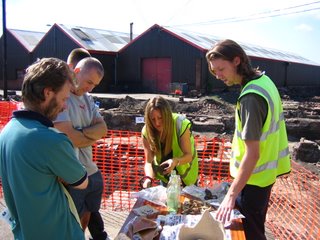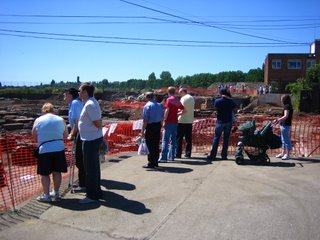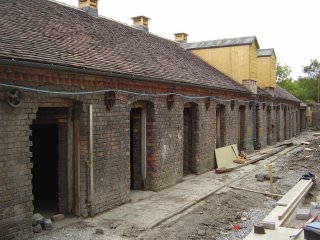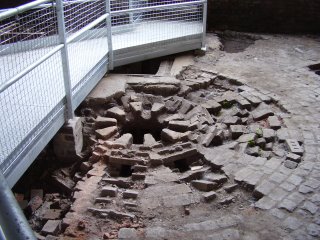On Saturday 15th July,
Ironbridge Archaeology will be opening the exciting excavations at
Wednesbury Forge to the public. As well as being in continuous use for over 400 years, this site saw the first windmill ever used for metallurgical purposes and was the centre of Spear and Jackson's garden tool production for many years.
We will be open from 10.00am until 4.00pm. For more information about the site please
download our leaflet. Or visit our
website, or scroll down this blog for earlier pictures. The site is located on St. Paul's Road, Wednesbury. The site is in the
centre of this map, 'zoom out' to locate the site within the west midlands.
We look forward to seeing you on site on Saturday!
Here are some recent photos of the excavation. Please scroll down to see some previous pictures as the project has progressed.
 The second wheelpit, late 18th century in origin, with a turbine (left) installed in c.1904.
The second wheelpit, late 18th century in origin, with a turbine (left) installed in c.1904. Detail of the second wheelpit, showing score-marks left by the original water wheel. The side of the wheelpit is iron-framed, quite a rare development in water power technology. The outflow goes into the main culvert.
Detail of the second wheelpit, showing score-marks left by the original water wheel. The side of the wheelpit is iron-framed, quite a rare development in water power technology. The outflow goes into the main culvert. Grinding area within the windmill - the only wind-powered grinding troughs ever to be excavated!
Grinding area within the windmill - the only wind-powered grinding troughs ever to be excavated!
 Looking at artefacts
Looking at artefacts










